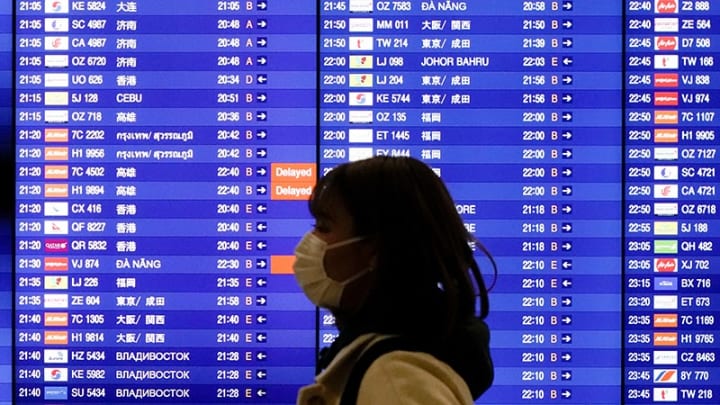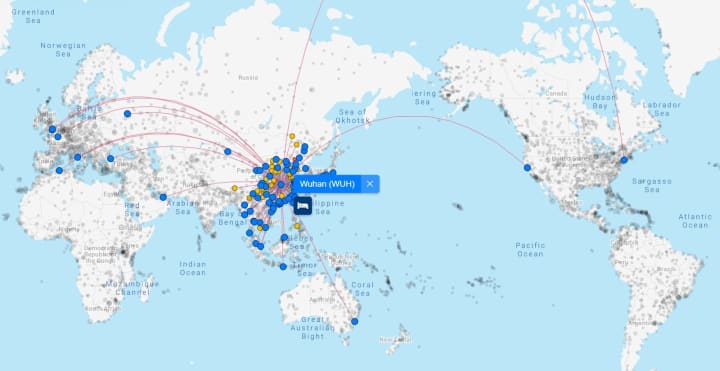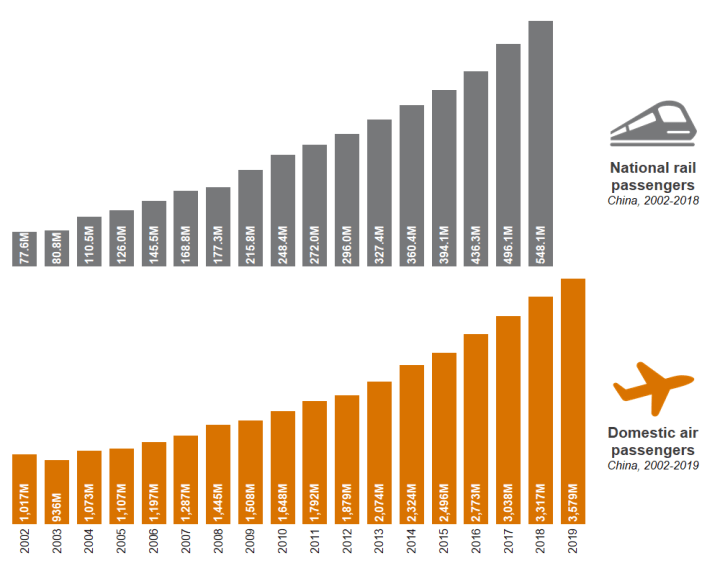
CANBERRA — As cases of the 2019 novel coronavirus, or 2019-nCoV, continue to shoot up in China, a number of countries have imposed travel bans for travelers coming from mainland China, and several airlines have suspended or canceled flights to and from the country, in efforts to curb the further spread of the virus. In China, several cities have been on lockdown for similar reasons.
The World Health Organization does not recommend travel and trade restrictions as a measure to control the outbreak. Some studies have shown how such restrictions have very little effect in containing the spread of a virus, especially when bans are put in place long after the first infected case has been identified. At best, it may only delay the virus’ spread for a few days or weeks.
“People always adopt the conventional approach: better safe than sorry. It's better to face the criticism you overdid things, than face the criticism you did not do enough.”
— Jean-Paul Rodrigue, professor, Department of Global Studies and Geography, Hofstra University
But Jean-Paul Rodrigue, a professor at the Department of Global Studies and Geography at Hofstra University, New York, who co-wrote an article about the links between travel and pandemics, told Devex some of the travel restrictions today are “better than nothing,” asking if the situation could be worse if regular flights were to be reinstated.
“People always adopt the conventional approach: better safe than sorry. It's better to face the criticism you overdid things, than face the criticism you did not do enough,” he said.
“The problem is, we don't see the effectiveness yet [of the travel restrictions] because those who contracted the disease contracted [it] something like five, seven days ago, just as those measures are implemented. And my assumption — I could of course be wrong — is we're going to see now a decline of the rate of growth of new infection because of the measures,” he said, adding that if this doesn’t happen, then it becomes very concerning as that would mean the disease is much more contagious.
Travel has played a role in past epidemics, with the translocation of diseases always related to air traffic patterns across continents, Rodrigue said.
Modern transportation was one of the factors that contributed to the spread of the 1918 pandemic, known as the Spanish influenza, that killed an estimated 50 million to 100 million people, according to the article he co-authored. The virus spread globally through infected crews and passengers of ships and trains.
During the SARS outbreak of 2003, cities with direct flights to Hong Kong “were 25 times more likely to record a SARS case than cities that were not directly connected,” the article stated. In addition, cities that had at least two connecting flights to reach Hong Kong did not report a single case.
But there’s no stopping the advancement of communication and transportation systems, as economies grow and people travel more intensively. So countries will have to get better with early identification of a problem, and sounding the alarm early.
Domestic movement
Domestically high-speed rail and other improvements in helping to move people and goods around China means that the novel coronavirus is operating in a different environment to SARS in 2003.
In 2002, statistics show that 1 billion passengers traveled on the Chinese national railway. By 2019, this has more than tripled to 3.6 billion for the year ending December. Domestic air travel similarly has supported an increasing mobile population, growing from 77.6 million passengers in 2002 to 548.1 million in 2018.

Fei Chen, a senior lecturer in architecture at the University of Liverpool, explained in The Conversation that movement within China relies heavily on public transport infrastructure — 90% of which has been funded by and controlled by government authorities. Within large and dense Chinese cities, Chen says public transport is critical. And between cities, airports, express railways, motorways, and long-distance buses connect the country.
“Megacity regions are connected by transport routes and mostly developed around transport nodes, at both the regional and neighborhood scales,” she said. “This so-called transit-oriented development means that if the entry points of public transport are closed off in cities of the whole region, to a large extent, people are controlled in the region.”
The impact of a global economy
In addition to China’s changing movement domestically, global movement has also grown — creating more opportunities for the spread of pandemics.
The Belt and Road initiative, introduced in 2012, connects China economically with an estimated 139 countries across Asia, Africa, Europe, and the Pacific. Through Belt and Road, two thirds of the world’s population are estimated to be connected — a massive market for Chinese businesses to tap into.
But global growth generally is also creating a more connected world that can facilitate the spread of diseases.
In 2003, the United Nations World Tourism Organization figure for global international tourism arrivals stood at 694 million — down from the 703 million reported the previous year with SARS playing a factor. Within 16 years, this number had more than doubled to 1.5 billion reported for the 2019 calendar year.
In presenting the 2019 statistics, UNWTO Secretary-General Zurab Pololikashvili highlighted the importance of this booming global movement for economic development.
“In these times of uncertainty and volatility, tourism remains a reliable economic sector,” he said. “Our sector keeps outpacing the world economy and calling upon us to not only grow but to grow better.”
The economic impact is shown in research by the World Travel & Tourism Council. For 2018, the global travel and tourism sector contributed $8.8 trillion and 319 million jobs to the global economy, record numbers with the growth rate of the sector exceeding global gross domestic product. 2019 statistics are expected to again show an increase.
Concerns on the impact of the 2019-nCoV outbreak on the travel and tourism industry has seen Gloria Guevara, CEO at the WTTC, release a statement calling for engagement with the sector to stop the global spread.
“Rapid action can help limit lasting damage and the economic impact on the global travel and tourism sector, an industry that generates 10.4% (US$8.8 trillion) to global GDP,” she said.
She highlighted the economic impact of past outbreaks. The worldwide economic impact of the 2009 H1N1 outbreak was estimated up to $55 billion. The estimated damage of the 2003 SARS outbreak meanwhile to the global travel and tourism industry was between $30 billion and $50 billion. In China, 2.8 million jobs were lost, and there was a 25% reduction in tourism GDP.
The World Trade Statistics Review 2019 further shows the economic reliance on an increasingly globally connected economy. In 2008 the value of global exports was $16.2 trillion. By 2018, this had increased to $19.5 trillion.
Already the impact of 2019-nCoV is making its mark on the economy, with Chinese stocks dropping by 8% on Feb. 3, and with value of the Yen dropping by 2%.
But International Monetary Fund chief Kristalina Georgieva said last week it’s too early to assess the outbreak’s economic impact on China’s economy, despite an immediate impact felt on the travel, tourism and manufacturing sectors.
“And a little bit beyond China may initially be impacted. China has taken very dramatic actions to restrict the spread of the virus and work is underway on a vaccine. So let’s say for this quarter, there will very likely be a negative impact,” she said, adding that what would happen beyond this quarter will be observed and assessed.
Read more:
► 2019-nCoV outbreak — a timeline
► Tedros addresses criticism against China coronavirus response
► Declaring coronavirus emergency alone is not enough, experts say
► Africa needs early detection of coronavirus, WHO says
► Coronavirus: WHO sets the record straight on facts and misinformation
► Lab-grown novel coronavirus to speed up detection and response





